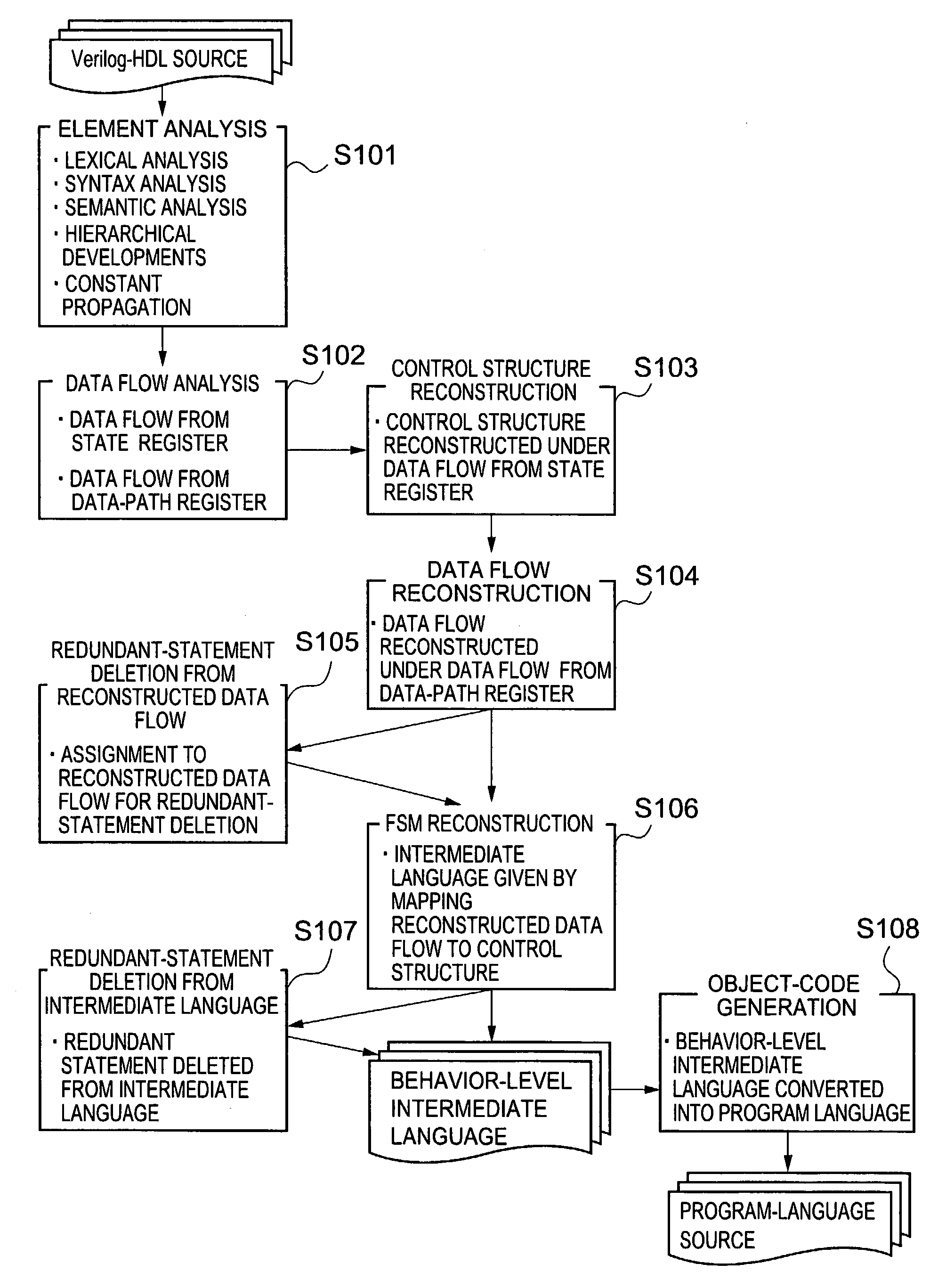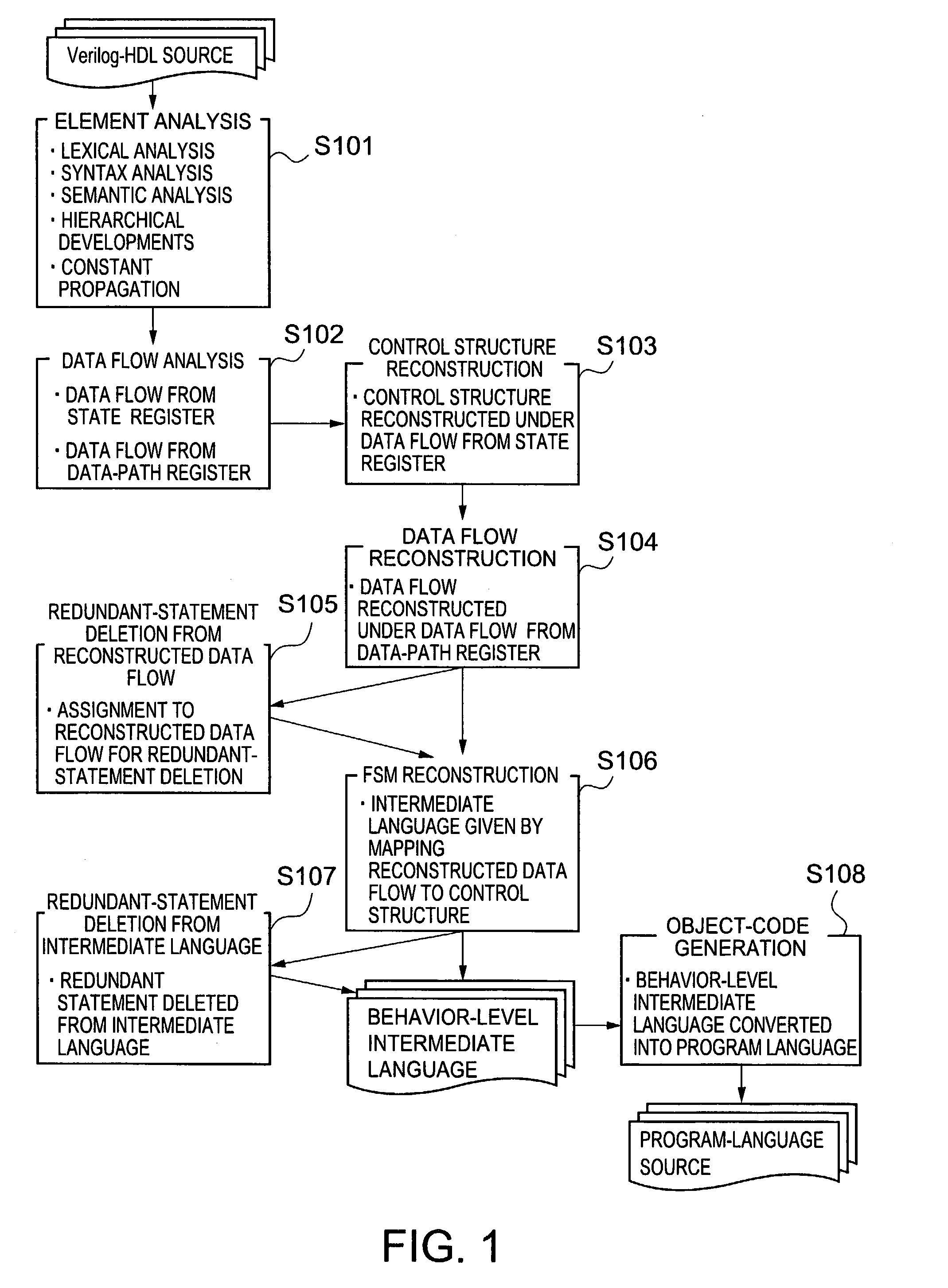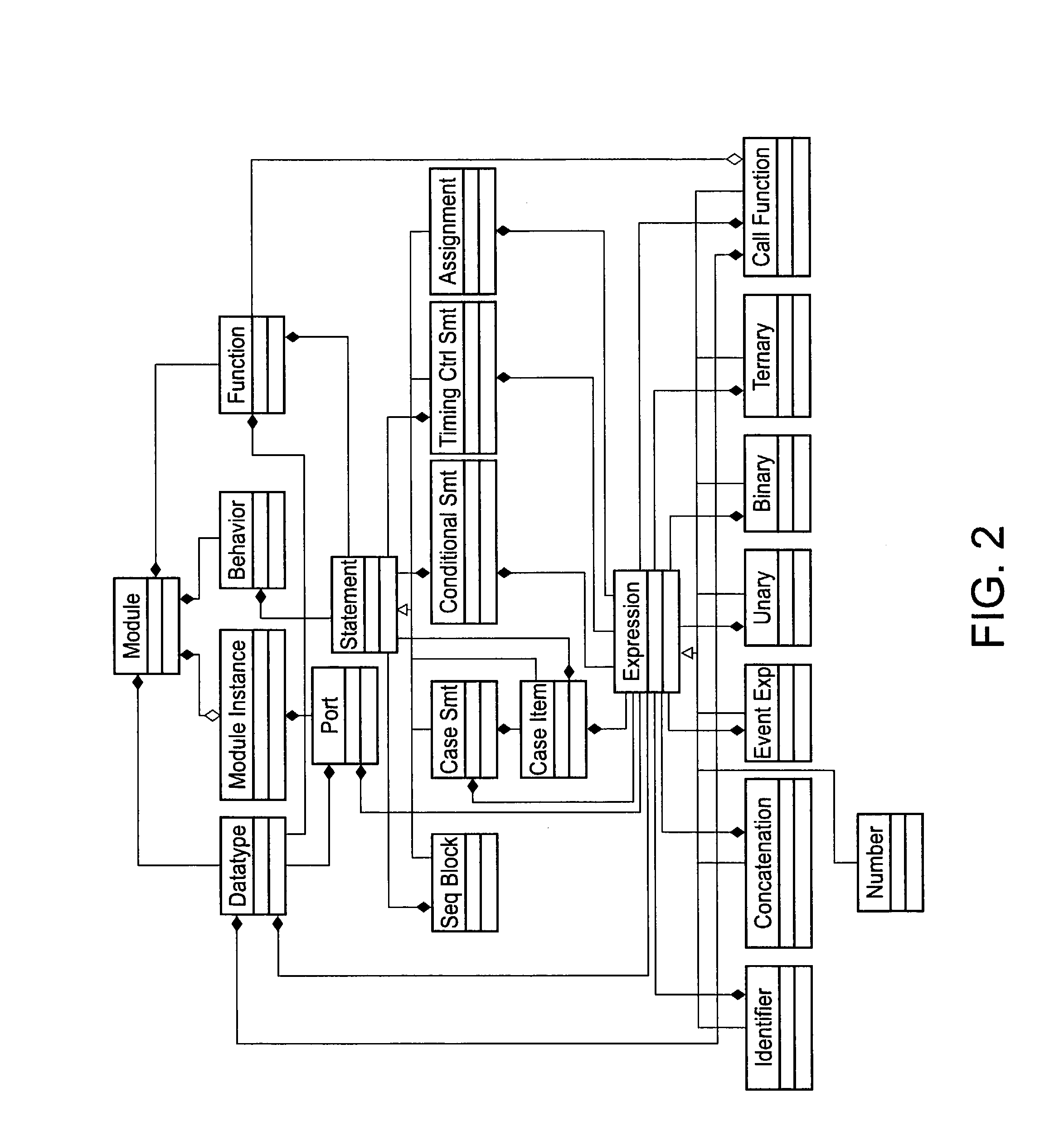Hardware-operation description conversion method and program therefor
a hardware operation and description technology, applied in the direction of program control, instruments, cad circuit design, etc., can solve the problems of rtl simulation on computer and software simulation that takes a long tim
- Summary
- Abstract
- Description
- Claims
- Application Information
AI Technical Summary
Benefits of technology
Problems solved by technology
Method used
Image
Examples
example 3
Exemplary Reconstruction of Data-Path Data Flow
[0235]Listed below is a source code 16, an exemplary reconstructed data-path data flow in a state STATE0 of the FSM, the example in the control-structure reconstruction step to the data flow, the example in the data-path-register-originated data-flow creation step.
[0236]The control signal in STATE0 is described as follows. The left-side numerals in the reconstructed data flow are line numbers in the RTL description shown in FIG. 22 to 26.
[0237](Source Code 16)[0238] / / control signal[0239]34: m1c1′b0;[0240]35: m2c1′b0;[0241]36: m3c1′b0;[0242]37: v3c1′b1;[0243]38: v4c1′b1;[0244]39: v6c1′b0;[0245]40: v5c1′b0;[0246]41: a—mux—c1′b1;[0247]42: b—mux—c1′b1;
[0248]The following is the data flow before reconstruction. The left-side numerals in the reconstructed data flow are line numbers in the RTL description shown in FIGS. 22 to 26.
[0249](Source Code 17)[0250] / / data flow[0251]109: b—mux—c—out—mux c;[0252]105: a—mux—c—out—mux—c;[0253]101: v2—out2—...
example 1
Conversion of Concatenation to Language C
[0352]Concatenation statements shown below require that 255 be ANDed with each bit for supplying eight lower-significant bits of a signal “c” to a signal “b”. It is also required that the signal “c” be shifted in right by 8 bits and 255 be ANDed with each bit for supplying eight upper-significant bits of the signal “c” to a signal “a”.
[0353](Source Code 25)[0354]wire [7:0]a, b;[0355]wire [15:0]c;[0356]{a, b}=c;
[0357]The results are equivalent conversion as shown below:
[0358](Source Code 26)[0359]unsigned long a, b, c;[0360]b=c & 255U;[0361]a=(c>>8) & 255U;
example 2
Conversion to Language C
[0362]Listed below is exemplary Language C converted from the intermediate language created in the control-structure / data-flow combination step, with the one-to-one conversion and concatenation discussed above.
[0363]
(Source Code 27)state = next—state;switch (state) {case 0:next—state = 1;add—out = (v2—in+v3—in) & 255UL;—add—tmp = ((v2—in+v3—in) >> 8) & 1UL;mul—out = (v3—in*v4—in) & 255UL;—mul—tmp = ((v3—in*v4—in) >> 8) & 255UL;break;case 1:next—state = 2;v6—out = add—out;—add—tmp = ((add—out+mul—out) >> 8) & 1UL;add—out = (add—out+mul—out) & 255UL;mul—out = (v1—in*v2—in) & 255UL;—mul—tmp = ((v1—in*v2—in) >> 8) & 255UL;break;case 2:next—state = 0;v6—out = add—out;add—out = (v2—in+mul—out) & 255UL;—add—tmp = ((v2—in+mul—out) >> 8) & 1UL;mul—out = (mul—out*v6—out) & 255UL;—mul—tmp = ((mul—out*v6—out) >> 8) & 255UL;break;}
[0364]The resultant source of Language C is listed below, with deletion of redundant statements among new ones created by concatenation.
[0365]
(...
PUM
 Login to View More
Login to View More Abstract
Description
Claims
Application Information
 Login to View More
Login to View More - R&D
- Intellectual Property
- Life Sciences
- Materials
- Tech Scout
- Unparalleled Data Quality
- Higher Quality Content
- 60% Fewer Hallucinations
Browse by: Latest US Patents, China's latest patents, Technical Efficacy Thesaurus, Application Domain, Technology Topic, Popular Technical Reports.
© 2025 PatSnap. All rights reserved.Legal|Privacy policy|Modern Slavery Act Transparency Statement|Sitemap|About US| Contact US: help@patsnap.com



